Archived Water Damage Blog Posts
Understanding Water Damage and Its Cleaning Process in Central East Baton Rouge Parish
10/30/2024 (Permalink)
Water damage can disrupt homes and businesses, causing issues from structural harm to mold growth. At SERVPRO of Central East Baton Rouge Parish, we understand that quick action is critical to minimize damage and restore your space efficiently.
Water damage can result from floods, leaks, or plumbing failures, seeping into walls, floors, and furniture. Left untreated, moisture can lead to mold, compromising indoor air quality and posing health risks. That’s why our team is equipped with advanced tools and techniques to locate and eliminate hidden moisture.
Our water damage restoration process includes water extraction, drying, dehumidifying, and sanitizing to prevent long-term damage. With a focus on thorough cleaning and restoration, SERVPRO of Central East Baton Rouge Parish ensures your property is returned to its pre-damage condition.
For reliable water damage restoration in Baton Rouge Parish, trust our team to protect your property and restore peace of mind.
Contact: (225) 275-7445
Preventing Water Damage in Your Baton Rouge Home: Essential Tips
7/26/2024 (Permalink)
When it comes to safeguarding your home against water damage, prevention is key. Baton Rouge's humid climate and heavy rains make it essential to take proactive steps to protect your property. Here are some vital tips:
- Maintain Your Gutters: Ensure gutters and downspouts are clean and direct water away from your home.
- Inspect Your Roof: Regularly check for damaged or missing shingles.
- Seal Windows and Doors: Make sure all seals are intact to prevent water seepage.
- Install a Sump Pump: A sump pump can help keep your basement dry during heavy rains.
By following these steps, you can significantly reduce the risk of water damage to your home. For professional water damage restoration, contact SERVPRO of Central East Baton Rouge Parish.
Smart Home Technology to Monitor and Prevent Water Damage
10/17/2023 (Permalink)
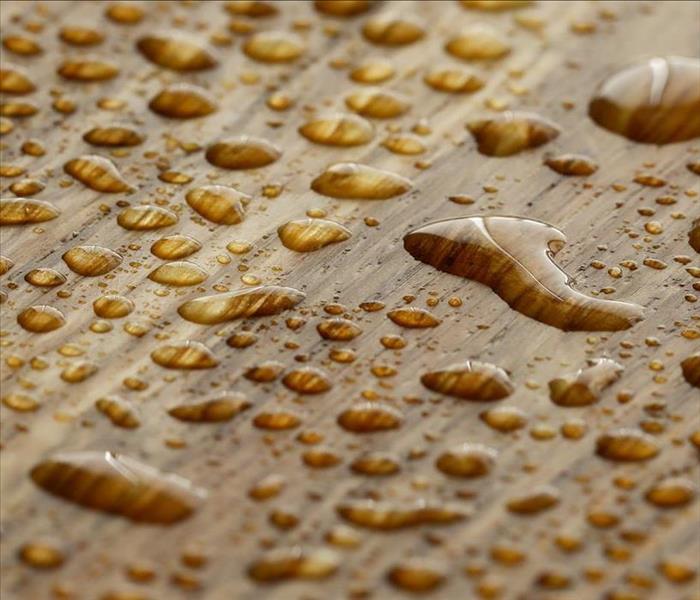 Consider installing smart home technology into your home to protect against water damage.
Consider installing smart home technology into your home to protect against water damage.
Water damage is a common and costly issue that homeowners often face. Whether it's a burst pipe, a leaky faucet, or a flooded basement, water damage can lead to significant property damage and expensive repairs. However, with the advancements in smart home technology, homeowners now have the opportunity to proactively monitor and prevent water damage. In this blog post, we will explore how smart home technology can help in monitoring and preventing water damage in your home.
Smart Water Leak Detectors
Smart water leak detectors are devices that can detect the presence of water in areas prone to leaks, such as bathrooms, kitchens, and basements. These detectors can send real-time alerts to your smartphone when a leak is detected, allowing you to take immediate action before the damage escalates.
Smart home technology can also provide real-time monitoring of water flow in your home. By installing smart water flow monitoring devices, you can keep track of water usage and identify any abnormalities. Sudden spikes in water flow can indicate leaks or burst pipes, triggering an alert to help you address the issue promptly.
Automatic Shut-Off Valves
In the event of a water leak or excessive water flow, automatic shut-off valves can automatically turn off the main water supply to your home. These valves can be connected to smart home systems and triggered by the detection of water leaks, minimizing the extent of potential damage.
With smart home technology, you can remotely control your water valves using smartphone apps or voice-activated assistants. This allows you to shut off the water supply when you're away from home, offering peace of mind and preventing water damage in case of emergencies.
Moisture and Humidity Sensors
Smart moisture and humidity sensors can help detect potential water damage caused by excessive moisture or high humidity levels. These sensors can send notifications when moisture levels exceed a predetermined threshold, allowing you to take necessary actions to prevent mold growth and other water-related issues.
Integration with Home Security Systems
Smart home technology can integrate with home security systems, providing a comprehensive approach to monitoring and preventing water damage. When suspicious water-related activities are detected, such as sudden changes in water flow or leaks, the security system can trigger alarms and send alerts to your smartphone and security monitoring service.
Real-Time Alerts and Notifications
One of the significant advantages of smart home technology is receiving real-time alerts and notifications directly on your smartphone. Whether it's a water leak, a burst pipe, or excessive moisture, immediate notifications enable you to respond quickly and minimize potential water damage.
Smart home technology not only provides real-time information but also allows you to access historical data and insights. By analyzing water usage patterns and historical data, you can identify potential issues and make informed decisions to prevent water damage in the future.
Professional Monitoring Services
Some smart home technology providers offer professional monitoring services for your water detection and prevention systems. These services can provide an additional layer of protection, with experts monitoring your home 24/7 for any water-related issues and taking necessary actions to limit damage. Consider incorporating smart home technology into your home to safeguard against water damage and enjoy the convenience of a smarter, more secure living space.
Dealing with a Pipe Break: Steps to Take for Effective Recovery
7/24/2023 (Permalink)
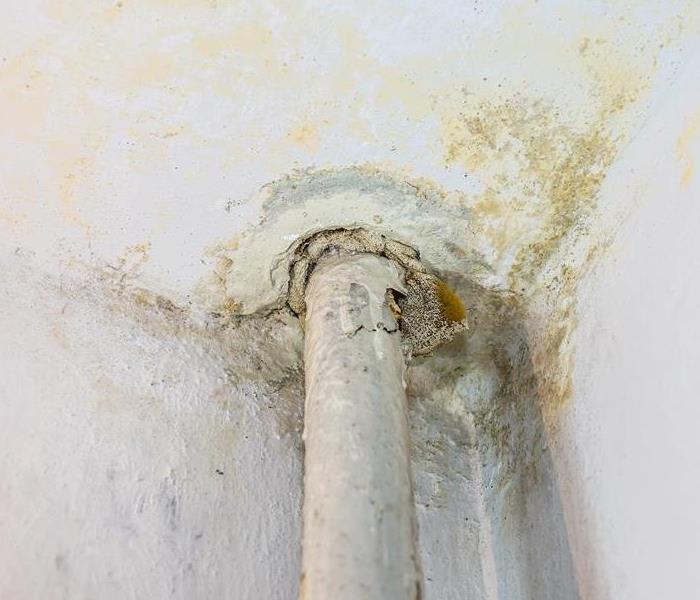 A pipe break can cause significant damage, call a professional to ensure a successful recovery.
A pipe break can cause significant damage, call a professional to ensure a successful recovery.
Experiencing a pipe break in your home can be a distressing situation, potentially leading to significant water damage if not handled promptly. Acting swiftly and knowing the right steps to take can help minimize the impact of the pipe break and ensure a successful recovery. In this blog, we will guide you through the essential steps to follow after a pipe break, enabling you to mitigate water damage, protect your property, and restore normalcy.
Shut Off the Water Supply
The first and most crucial step is to shut off the water supply to the affected area. Locate the main water shut-off valve in your home and turn it off to prevent further water flow. If you're unsure of the location or have individual shut-off valves for specific areas, such as sinks or toilets, turn off those valves instead.
Assess the Damage
Evaluate the extent of the water damage caused by the pipe break. Inspect the affected area and surrounding spaces for signs of water pooling, wetness on walls or ceilings, or any structural damage. Take photographs or videos of the damage for insurance purposes.
Call a Professional Plumber
Contact a licensed plumber immediately to repair the broken pipe. Professionals have the expertise and tools to fix the issue correctly, minimizing the risk of future problems. Avoid attempting a DIY repair unless you have the necessary skills and knowledge.
Remove Standing Water
If there is standing water due to the pipe break, remove it as quickly as possible. Use mops, towels, or a wet/dry vacuum to soak up the water. Ensure proper ventilation and airflow by opening windows and using fans or dehumidifiers to aid in drying the affected area.
After removing standing water, focus on thoroughly drying the affected area to prevent mold growth and further damage. Use fans, dehumidifiers, and natural airflow to facilitate drying. Monitor moisture levels with a moisture meter and ensure that all surfaces are completely dry before proceeding with repairs.
Salvage and Clean Personal Belongings
If personal belongings or furniture have been affected by the water, move them to a dry area and assess the damage. Salvage items that are salvageable and set aside those that require professional cleaning or restoration. Thoroughly clean and disinfect any items that have come into contact with the water.
Assess Structural Damage
Inspect walls, floors, and ceilings for signs of structural damage caused by the pipe break. Look for sagging, cracking, or warping. If significant structural damage is present, consult a professional contractor or structural engineer for further evaluation and necessary repairs.
Take thorough documentation of the damage, including photographs, videos, and written descriptions. Contact your insurance company to report the incident and initiate the claims process. Provide them with the necessary documentation and keep a record of all communication with your insurance company.
Dealing with a pipe break requires quick action and proper handling to minimize water damage and prevent further complications. By following these steps you can effectively navigate the aftermath of a pipe break and restore your home to its pre-damage condition. Remember, if the damage is extensive or if you're uncertain about the necessary repairs, it's always wise to seek professional assistance to ensure a thorough and successful recovery process.
Prevent water damage while on Vacation
3/13/2023 (Permalink)
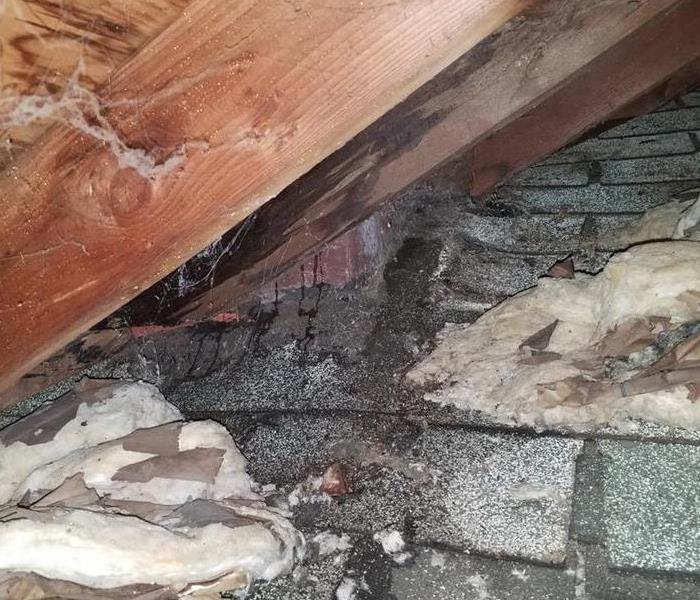 Take precautions when you leave for vacation.
Take precautions when you leave for vacation.
Vacationers, beware! Water damage can be costly and a messy hassle to deal with when you're already away from home. If you haven't already done so, it's important that you take precautions to prevent water damage in your home while you're on vacation. Follow these simple tips for preventing water damage on vacation.
Water damage can be costly.
Vacationers' homes can be left vulnerable to water damage if they're not careful. Water damage is a serious problem that can cost homeowners thousands of dollars in repairs. While vacationers may think they'll be back before any problems arise, it can take weeks or months for insurance claims to be processed and repaired homes restored by contractors. And even then, some types of water damage can be difficult or impossible to repair after the fact, especially if you don't know what signs indicate that there might be an issue at all.
A quick action plan.
Water damage can be expensive to repair and cause serious secondary damages if you don't take the right steps to prevent water damage while away from home.
The best way to prevent water damage is by scheduling regular maintenance with a professional plumber who knows your plumbing system inside and out and who will know how best to handle any situation that arises when you're away from home for an extended period of time.
Keep appliances clean and dry.
Make sure all appliances are clean and dry to prevent any water damage could become a potential loss. Don't leave the dishwasher running when you're not home and ensure now water is sitting in the bottom before leaving that could cause a water loss. Don't leave the washing machine running when you're not home. And most importantly don't leave the dryer running when you're not home which could lead to a potential fire.
Make sure your home is properly insulated.
Water damage is a common problem for many homeowners, but it's easy to prevent. By making sure that your home has proper insulation and ventilation, you can limit the amount of moisture in the air and keep yourself safe from mold and mildew growth.
Maintaining proper insulation levels in your home will help prevent cold drafts from entering through cracks in walls or windowsills. This not only keeps out unwanted weather conditions out but it also helps keep heat inside during winter months. In addition, insulation reduces noise pollution by dampening sounds from outside sources such as traffic or neighbors, tv and even foot steps from upstairs. Lastly, improved energy efficiency leads directly back into saving money on utility bills each month.
Install a backup sump pump system.
A backup sump pump system is a highly beneficial and cost-effective way to prevent water damage on vacation. It's easy to install, and it can be placed anywhere in your home or office.
A backup sump pump system works by pumping water out of the basement when storms are approaching. This prevents flooding from occurring, which is especially important if you have valuables stored dow stairs ere such as electronics or furniture that could be ruined by water damage. Store valuables in waterproof containers until you return home.
Water damage can be prevented, but it takes effort and planning ahead of time
Water damage can be a costly problem. It's also preventable, but the key is to plan ahead of time and take precautions. Make sure your home is secure before you leave. Make sure that all windows and doors are locked, and don't forget about things like garage doors and automatic gates.
Keep an eye on weather forecasts for where you're going especially if there's been recent flooding or other extreme weather events nearby. Check local news reports online as well to ensure your home id safe while left unattended.
While it's tempting to leave everything behind when you go on vacation, it's important to take precautions against water damage. The best way to do this is by making sure your home is properly insulated and has backup sump pump systems installed. If you have any questions about how these systems work or whether they're right for your home, contact us today!
Protect your home from Water Damage
3/7/2023 (Permalink)
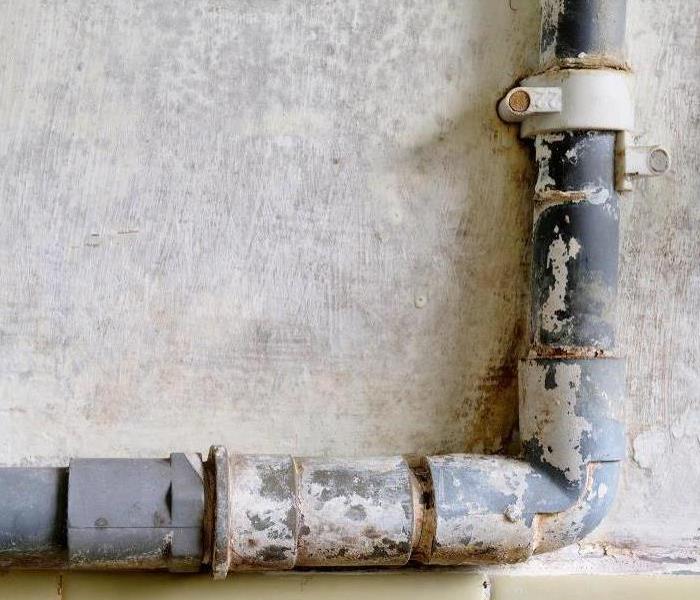 Protect your home from water damage.
Protect your home from water damage.
Water damage is one of the most common problems homeowners face. It can range from small leaks and moisture stains to major floods that destroy your home’s structure. If you suspect that there’s water damage in your house, don’t hesitate to call a professional for help. This guide will give you some tips for preventing water damage in your home so that you don't have to deal with this issue before it becomes a problem!
Check your house for signs of water damage.
Check the basement, attic and crawl spaces. Look for signs of water damage on the walls and floor. Keep a check on windows and doors for signs of water damage, especially after a storm or flood.
Keep an eye on your water bill for unusual spikes.
One of the best ways to tell if your home has experienced water damage is by checking the water bill. If you notice an unusual spike in your usage, it could be an indicator that there's been some type of leak or flooding in your house.
If this happens, check around for signs of damage--a burst pipe may have caused wet carpeting or walls; a leaking roof could mean mold growth on wood surfaces (like in basements). If there are no visible signs of damage, call up your utility company right away so they can come out and check their meters before any more charges get added onto your bill.
Look for signs of wear in your pipes and faucets.
Look for signs of wear in your pipes and faucets. If you see any, it's time to call a plumber.
Faucet washers can wear out over time, causing water leaks that lead to costly repairs or replacement. The same thing can happen with pipes if they're exposed to hard water or acidic solutions (like bleach), which corrode them from the inside out.
Look out for cracks in the foundation of your home.
If you notice cracks in the foundation walls, or if there are any holes in the floorboards and wallboards, it may be time to call a professional. The best way to ensure that your home is safe from water damage is by getting an inspection. If you do find signs of water damage after a storm or flood, contact a contractor immediately so they can fix the problem before it gets worse.
Regularly clean out the gutters on your house.
Regularly cleaning the gutters on your home is one of the best ways to prevent water damage. If you don't clear debris from your gutters, leaves and other debris can clog them, causing water to back up in your home. To avoid this, remove leaves from the gutter before they have a chance to block it. You should also make sure that rainwater isn't pooling on top of a leaf pile or other type of obstruction, if there is too much pressure against these barriers, they may give way and allow water into places where it shouldn't go--like behind walls or under floors.
Make sure that you're not overwatering your lawn.
Overwatering is another major cause of water damage to your home. When you have a lawn, it's important to make sure that you're not overwatering it. Overwatering can cause root damage and lead to disease or insect infestations, which will damage the grass even more.
The best way to prevent this is by using a soil moisture meter and watering deeply but infrequently (once per week). You should also use a sprinkler with a low flow rate so that there isn't too much pressure on the roots when they are exposed during watering cycles.
Preventing water damage
Preventing water damage is much easier than dealing with it once it occurs. Water damage can be very expensive to fix. If you don't want to spend the money or time that comes with repairing water damage, make sure there's no standing water in your home by checking sinks and tubs regularly for leaks (and fixing them when necessary).
We understand that water damage can be a stressful situation to deal with, but the good news is that there are many things you can do to protect yourself from it. Water damage can be expensive and time-consuming to repair, so taking steps now will help ensure that your home stays dry for years to come!
Why Is There Water Under My Cabinet?
11/15/2022 (Permalink)
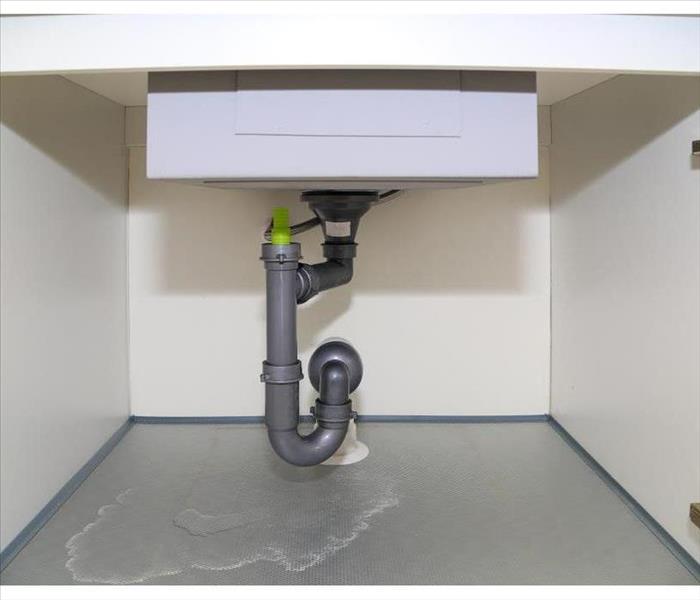 The presence of water under the kitchen cabinets is not ideal.
The presence of water under the kitchen cabinets is not ideal.
Why Is My Cabinet Under Water?
Water under the kitchen cabinets is not a good sign. It usually means there's a leak in your pipes, and it should be dealt with ASAP to prevent any further damage. If you notice water under the kitchen sink, follow these steps as soon as possible to minimize water damage.
Whether it's a stain or water pooling in the cabinet, water under the kitchen cabinets is not a good sign. If you're not sure why there's water under your cabinets, here are four things to keep in mind:
- Water damage can be expensive to fix. The sooner you deal with a leak, the better—especially if it's coming from pipes located inside an exterior wall. In this case, you may want to call your insurance company as soon as possible and ask them what steps you should take next.
- Waiting too long could cause more problems than one leaky pipe!
If you notice water under the kitchen sink, follow these steps as soon as possible to minimize water damage.
- Shut off the water supply. The first thing to do after noticing water under your cabinet is to turn off the main valve that controls the water supply to your house. Turn it clockwise until it's closed, and then confirm that there is no more running water in your sink or tub before proceeding further.
- Check for leaks in pipes or fittings. If there are leaks anywhere on your plumbing system, they need to be addressed before anything else can be done with this situation.
Shut off the water supply.
If you notice water under your cabinet, the first thing to do is shut off the main water supply. This can be done by turning off the main valve on your house or apartment building if it hasn't already been turned off.
If you're not sure how to find this valve or how to turn it off, call a plumber who can help. If there are multiple shut-off valves under sinks in your home, turn them all off as well — but keep in mind that doing so may temporarily stop other water sources from working properly until they're all turned back on again!
Check for any leaks in the pipes.
If you discover that your pipes are leaking, you may need to call a plumber. Your water bill will be affected by the leaks, so make sure that you have an accurate record of how much water is being used in your house. The next time the plumber comes by for an inspection, ask him or her about ways to prevent future leaks from occurring.
If you can't find the source of the leak, call a plumber.
If you can’t figure out where the leak is coming from, it might be time to call in a professional. The cabinet company or home builder that installed your cabinets may recommend a plumber or contractor, but if not, you’ll have to do some searching on your own.
The first place to look is your insurance company: if you have homeowners' or renters' insurance coverage and the damage was caused by flooding (for example), you may be able to get reimbursed for the cost of repairing or replacing damaged goods like flooring and cabinets. Check with your agent before paying anything out of pocket because they could help you file a claim that could result in savings down the road.
Dry out the cabinet and clean up the area.
If you have a lot of water and your cabinet is still wet, use a wet/dry shop vac to remove as much water as possible. If this doesn't work, check for leaks again. If the leak persists, it's time to call in the professionals.
If you're lucky, the source of the leak will be easy to find and fix. If not, you may have to call a plumber or other contractor to take care of it. If there's water damage under your cabinets, contact your insurance company as soon as possible so they can help cover any costs related to fixing the problem or replacing damaged items like drywall or floorboards if necessary.
The Pros and Cons of Using Drain Cleaners
7/30/2022 (Permalink)
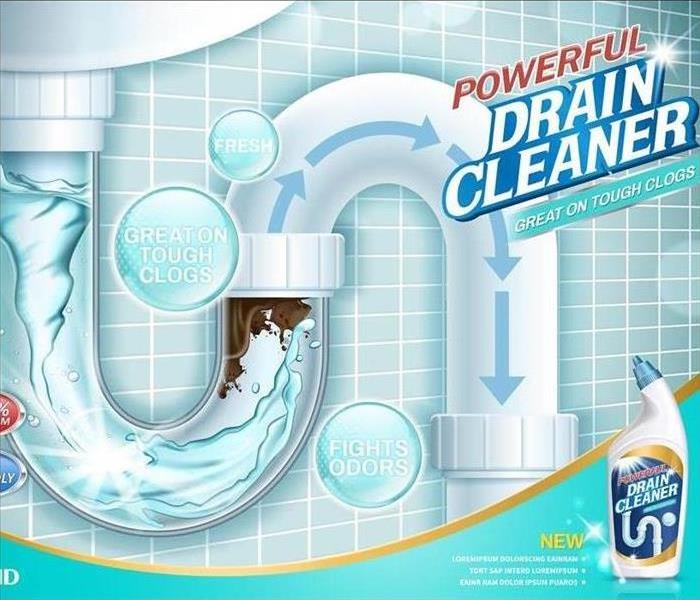 The pros and cons of using drain cleaners.
The pros and cons of using drain cleaners.
The Pros and Cons of Using Drain Cleaners
When water begins to drain slowly, it is a sign of trouble. Without some plan of action, the problem usually gets worse until you are faced with a clogged drain. It is one of the more common plumbing issues you are likely to encounter in Monticello, LA. You have a few broad options for clearing the drain:
- Hiring a plumbing contractor
- Using mechanical means such as a drain snake or manually clearing the pipe
- Pouring a drain cleaner down the drain
Depending on the problem, the first option might be overkill and could cost a bit of money. The second option requires a little bit of knowledge and a few tools, but it often works fine. The third option seems quick and easy, but is it really good for your pipes and your overall plumbing system?
The Dangers of Drain Cleaners
In some circumstances, using chemicals to clear a clogged drain might be appropriate. However, they should be used sparingly and it is a good idea to be aware of their disadvantages. In some instances, especially with fats, oils, and grease (FOG), the chemicals may clear the clog only to have it move further down the plumbing, where it could cause another blockage. Harsh chemicals can also be harmful to the environment, as they end up in lakes, rivers, and streams. Also, the use of a chemical drain cleaner poses a small risk to the user, as inhaling the vapors and getting it on your skin can cause irritation.
The Benefits of Water Damage Mitigation
If a plumbing problem causes water damage to your home, the services of a water remediation company may be beneficial. Trained technicians can handle everything from a water spill caused by a clogged drain to a large sewage backup. Sewage cleaning requires special skills and equipment that most homeowners do not have. Quickly taking care of water damage, whatever its source, prevents expensive damage to your home and removes unsanitary conditions.
How to Properly Dry Important Documents After Water Damage
6/26/2022 (Permalink)
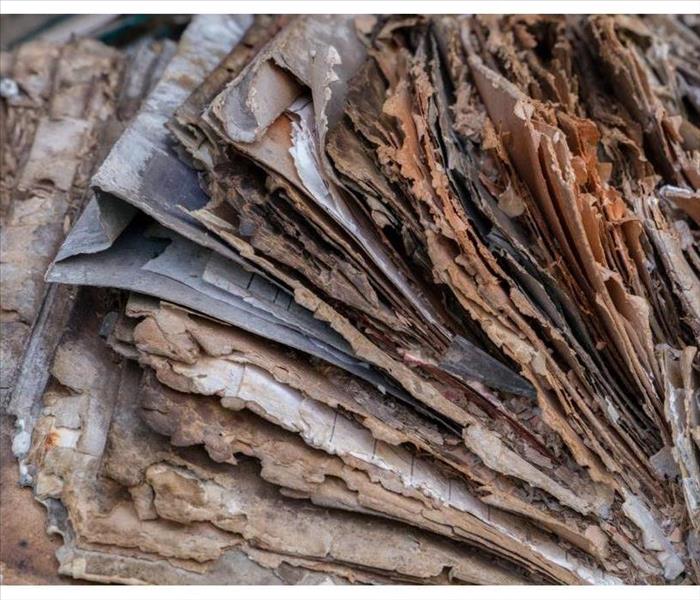 Wet documents can be salvaged with the help of water damage restoration experts.
Wet documents can be salvaged with the help of water damage restoration experts.
How to Dry Important Documents Properly After Water Damage
Water damage can hit businesses hard. Not only can it require repairs to the building, but also poses issues if important documents seep in moisture. Luckily, wet documents can be salvaged with the help of water damage restoration experts. Here are a few techniques the document drying process consists of in the event your Baton Rouge, LA, business be impacted by water.
1. Freezing Wet Documents
After any flooding event, locate any wet papers of value and get them to a freezer. Taking swift action here will prevent the growth of mold and stop rapid deterioration of the paper. Once you have the document frozen, restoration experts can transport them to a facility with state-of-the-art technology that allows these items to be restored to their prior condition. A specialized vaccuum-dry freezer is used to draw out any moisture from the paper, a method which is commonly used for restoring some museum archive items.
2. Gamma Irradiation
Depending on how much moisture an item retained and the contamination level of the water it had contact with, it's a possibility that molding or bacterial growth has occurred. To alleviate this, experts rely on a process known as gamma irradiation. This entails using powerful radiation to destroy any microorganisms and sterilize the item at hand.
3. Digitize Documents
With proper freezing and radiation, most items plagued by water damage can be restored. But to provide extra peace of mind, digital copies of impacted documents are often created. This gives relief to many business owners who don't have to compromise their documentation again in the event of future water or fire damage.
While it may seem that any papers that get caught in water are a lost cause, wet documents can be dried and saved. Immediate freezing helps preserve them before undergoing gamma irradiation and digitizing to complete the restoration process.
How To Keep Water Heaters in Good Condition
5/20/2022 (Permalink)
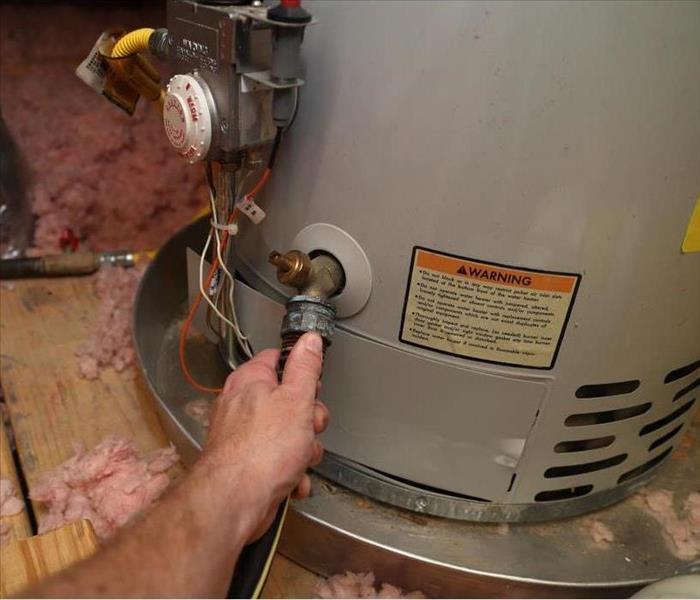 Flushing a water heater
Flushing a water heater
The last thing you want while taking a shower is cold water gushing out of the showerhead. Your first inclination may be to buy a new heater. There are easy instructions, however, that can help prolong the life of your heater in Monticello, LA, for many years.
Routine Maintenance on Your Water Heater
Conducting routine maintenance on your unit will reduce the risk of failure. If your heater malfunctions and you experience water damage, call a water restoration expert right away.
Test the Temperature-Pressure Release Valve - This valve regulates the pressure and temperature in the tank. To test it, put a pail below the discharge pipe. If water isn't released when you lift the lever, the valve must be replaced.
Check Electrical Connections - Periodically inspect the connections to ensure the unit is working properly.
Clean Sediment Within the Tank - As sediment builds up inside the tank, it can block the pipeline. If left unattended, it can also create cracks in the tank. Flushing the tank will reduce these risks.
Steps on Flushing a Water Heater
Performing a water heater flush may sound complicated, but it is really quite simple if you follow these steps.
Make sure the heater is turned off, then locate the drain valve and attach a garden hose to it.
Open the drain valve to release the water. While the water is flowing, turn on the hot water faucet in the kitchen or bathroom.
After several minutes, close the water supply valve and allow the water to continue draining until it stops
Once completely drained, make sure all of the valves are closed. At this point, turn the water supply on.
Check the faucet and wait until the water begins flowing smoothly again. This means that the water heater tank is full.
Turn the power and heating element back on.
Perform some routine maintenance on your heater to keep it running smoothly for years.
3 Steps To Stop a Continuously Flushing Commercial Toilet
3/1/2022 (Permalink)
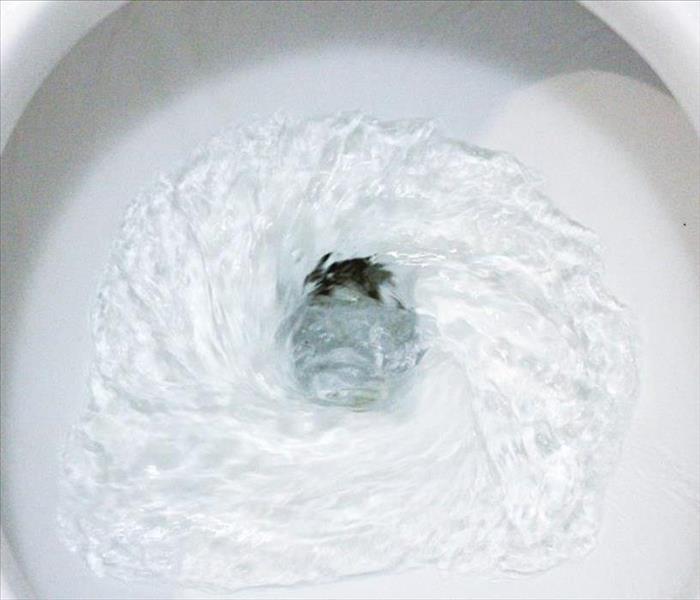 These steps can help your toilet from flushing continuously.
These steps can help your toilet from flushing continuously.
3 Steps to Stop a Commercial Toilet From Flushing Constantly
Commercial toilets flush by using a water-diverting device called a flushometer. This device enables tankless toilets, which are optimal for high-use bathrooms. If you manage a business property in Baker, LA, you probably have this type of fixture. Most of the time they operate smoothly, but sometimes they can accumulate built-up sediment that leads to a toilet overflow. When this happens, the flushometer does not stop flushing. Although flooding can be a daunting problem, there are simple steps you can take to clean out a typical manual flushometer and stop a toilet from flushing.
1. Take Apart the Flushometer
First, find the slot for a flathead screwdriver on one side of the flushometer. Turn the slot to shut off the water. Next, remove the top lid of the flushometer by loosening it with a wrench and then twisting it completely off. Placing a soft buffer material between the jaws of your wrench and the flushometer’s top lid can prevent scuffs.
Once the top lid is removed, you can unscrew and remove the flange cover. This should be done slowly and carefully, as trapped water may be released upon opening.
2. Clean the Gasket
Once the flange cover is removed, you can see the gasket. There will likely be a lot of sediment built up. This is typically the root cause of toilet overflow. Remove the gasket and clean it thoroughly, washing off all sediment. There may be a tiny opening called a weep hole. Use a small object to clear out this hole, being careful not to expand it in the process.
3. Reassemble, Test and Restore
Reinsert the gasket, and put the flushometer back together by reversing the steps of disassembly. If the problem persists after the water is turned back on, you will need to replace the gasket. If damage is sustained from the toilet flood, a local restoration and cleanup specialist can help get your property back in top shape.
These steps can address a toilet overflow in manual flushometers. Keep them in mind to avoid water damage in your commercial building's bathroom.
What To Do When You Discover Water Damage
1/19/2022 (Permalink)
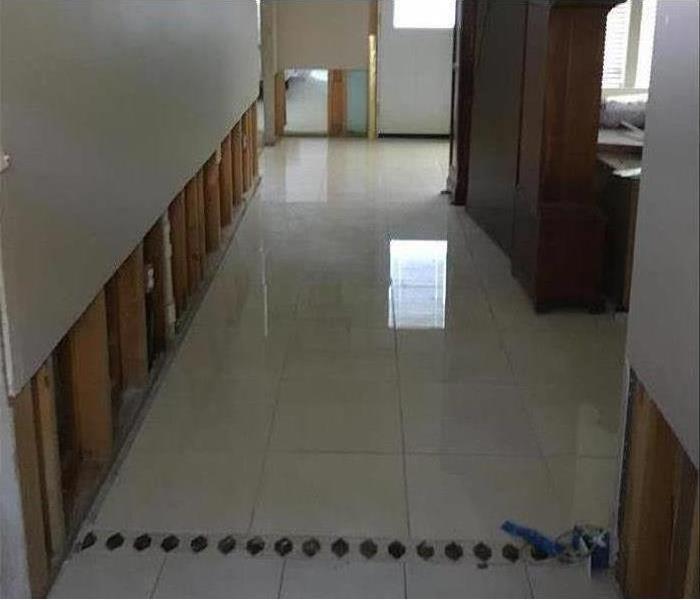 Water damage in Baton Rouge, LA.
Water damage in Baton Rouge, LA.
Steps To Clean Out Water Damage In a Home
Broken pipes, leaking pipes, a burst supply line, a poorly connected supply line, an aging appliance…there are countless factors in your home that may result in water damage, many of which you may not discover until after water has begun to pool in your home. Unfortunately, once you discover sitting water in your home, chances are that the issue has existed long enough to have caused extensive damage. While you cannot undo the damage that has already been done, you can act immediately to prevent further harm. Three steps you can take right away include the following:
- Shut off the water source.
- Look for safety areas and turn off circuit breakers if possible.
- Attempt to save contents.
If the damage is extensive enough, you may want to contact a Baton Rouge, LA, water cleanup team.
Turn Off the Source
It will not help you to clean up the water damage if you do not find the source and put a stop to the leak or influx of water. The source may be a leaking pipe, a poorly connected supply line or even an open window. Once you locate the source, shut off the valve or close it off somehow.
Turn Off Breakers
If you can do so safely, turn off power in all affected areas. An electrical current that comes into contact with water can create an even greater hazard and may put you and your home in danger. However, if turning off power means wading through a pool of water, leave it be and contact a professional.
Save Your Contents
If you can do so, remove items from the affected area and try to dry them out. Even if an item is not in direct contact with water, it is at risk of becoming moldy or rotted because of the excess moisture in the air. If electronics or electrical appliances sustained water damage, toss them out. Even if they look okay, using water damaged appliances is extremely dangerous and can cause a house fire.
Dealing with water damage is no fun, but it must be done. For help with more extensive problems, contact your Baton Rouge, LA, water cleanup team.




 24/7 Emergency Service
24/7 Emergency Service









